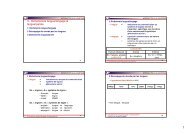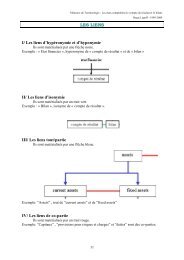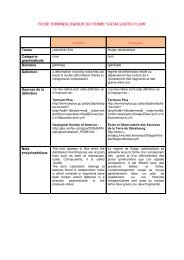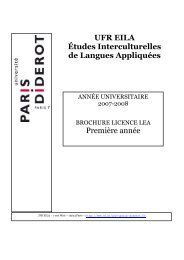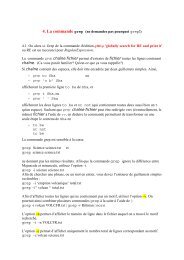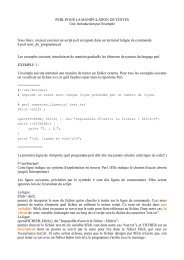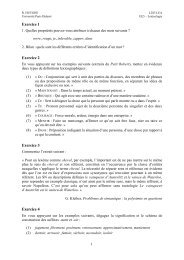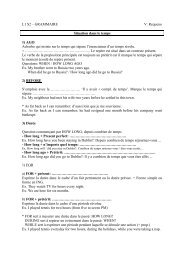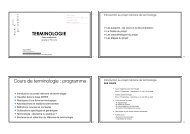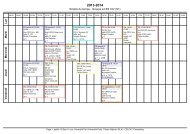INTRODUCTION TO ENGLISH TEXT LINGUISTICS
INTRODUCTION TO ENGLISH TEXT LINGUISTICS
INTRODUCTION TO ENGLISH TEXT LINGUISTICS
You also want an ePaper? Increase the reach of your titles
YUMPU automatically turns print PDFs into web optimized ePapers that Google loves.
Professor Christopher Gledhill<br />
(Notes de cours, Linguistique du texte anglais, 48LGAN23, EILA, Université Paris Diderot)<br />
Extract 3 Public speech Field: This extract has no explicit topic, rather it is made up of a<br />
greeting and refers to the previous discourse (another person’s<br />
‘introduction’).<br />
Mode: The text involves ‘turn-taking’, that is to say a hand-over<br />
from one speaker to another. This text is a typical staring point in<br />
dialogues (involving a formulaic greeting). It has two parts: a<br />
formal greeting, a polite reference to the previous speaker which<br />
also signals the beginning of a monologue (a public speech).Since<br />
the previous speaker is singled out, we can assume that there are<br />
other people in the audience.<br />
Tenor: The greeting and a reference to the previous speaker (note<br />
that the speaker is ‘named’ as an act of politeness) suggest that<br />
the speaker has assumed the role of ‘main speaker” and is not<br />
about to embark on a monologue.<br />
Table 4 summarises what is meant by ‘Field’, ‘Tenor’ and ‘Mode’. You will need to use this table as<br />
an analytical tool for exercise 2 (next page).<br />
Table 4: The three dimensions of Register<br />
Field<br />
What is going on, what the text is doing, what the text is about.<br />
This can include issues such as: Explicit and implicit purpose, Angle of Representation (<br />
technical vs. common-sense taxonomies and terminology, semantic roles, metaphor),<br />
etc.<br />
Mode<br />
How language or text plays a part in the interaction, including the ‘channel’ (or form) it<br />
takes.<br />
This can include issues such as: Explicit and implicit signals in the text (conjunctive<br />
cohesion, lexical cohesion, reference...), Degrees of interactivity (exchange structure,<br />
interruptions, overlap), etc.<br />
Tenor<br />
Who is engaged in the interaction, and what their relationship is.<br />
This can include issues such as: Social roles (distribution of speech functions, power<br />
relations), Social proximity / distance (level of formality / personal involvement),<br />
Speaker persona (tone, modality, affect), etc.<br />
8 / 37




